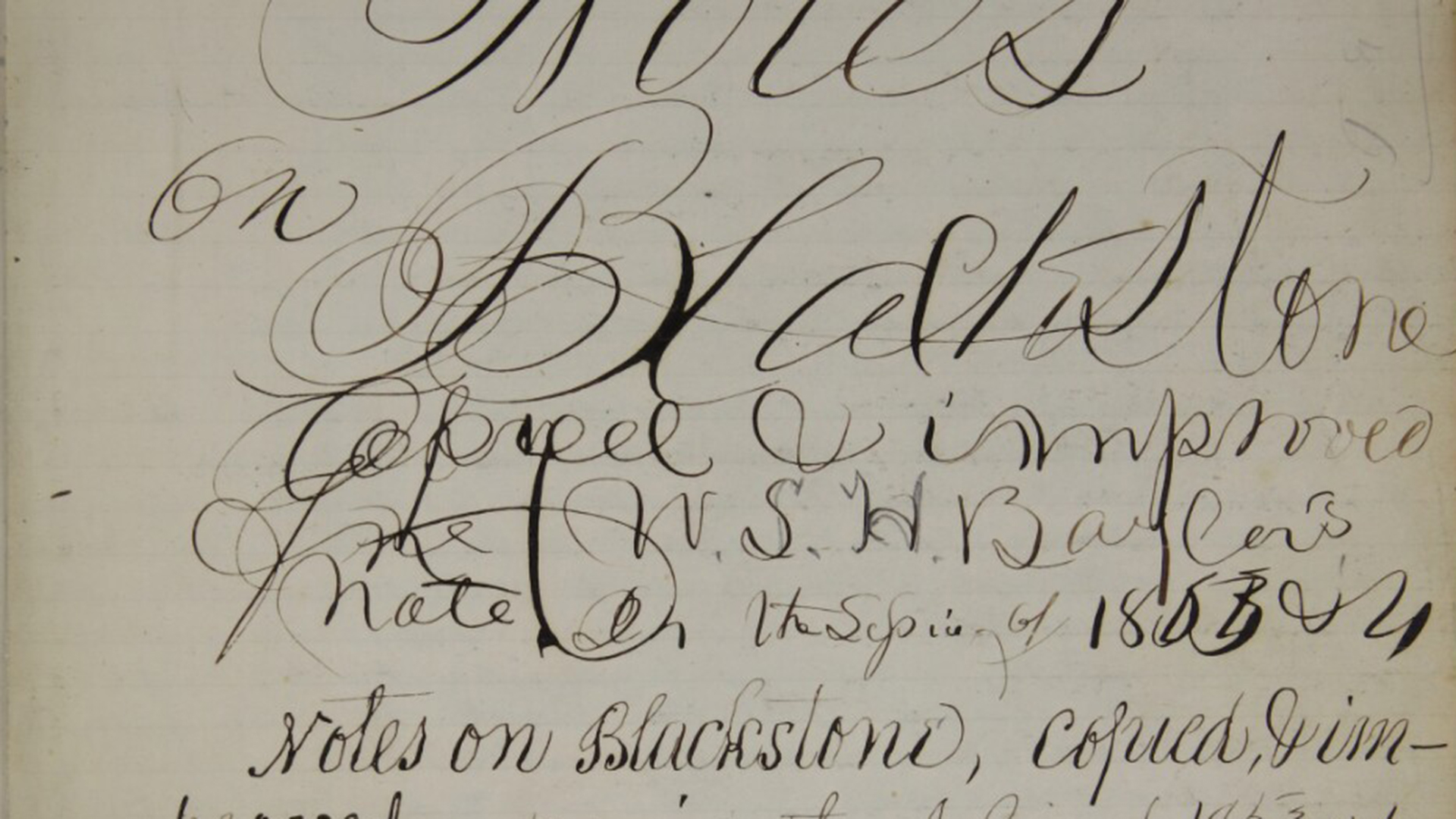About This Project
The beginnings of the Slavery and the University of Virginia School of Law Project can be traced back to the October 2017 symposium “Universities, Slavery, Public Memory & the Built Landscape.” The symposium, convened at the University of Virginia in commemoration of the university’s bicentennial, examined slavery’s impact on American higher education. The event brought together researchers and scholars from a cross section of the academy. The conference prompted Randi Flaherty, head of UVA Law Special Collections, to consider how the Law Library might contribute to the University’s workings to confront its historical intersections with slavery.
Building upon ongoing efforts at the Law Library to develop historical volumes on UVA Law’s architecture, student life, and curriculum, Flaherty (project director) spearheaded a review of holdings related to slavery’s role in the early UVA Law curriculum at the UVA Law Library and at the Small Special Collections Library. Through an internship supported by the Institute for Public History, English doctoral student John Modica spent the summer of 2019 examining student notebooks, compiling notes on the landscape of study at the intersection of American higher education and slavery, and making initial findings based on primary sources at UVA. Additionally, Amalia Garcia-Pretelt (Col ‘19) conducted research on Sunnyside Farm, which was owned by the prominent Duke family. The University’s Law and Business Schools now reside on this property. In the fall of 2019, Meggan Cashwell, the Law Library’s Postdoctoral Research Associate in Legal History, joined the department and became a co-curator of the initiative. Communications Specialist Logan Heiman, who held a dual appointment with DH@UVA, collaborated with Loren Moulds, head of digital scholarship for Law Special Collections, on web design and content layout. Jane McBrian digitized student notebooks in the Law Library's collection. Jane and Meggan spearheaded the transcription of the notebooks for the site in collaboration with library staff and student workers. IPH intern Mara Guyer researched the histories of Pavilion III and Pavilion X of the Academical Village in addition to unearthing information about UVA Law faculty and the enslaved individuals whom they hired. Curatorial Specialist Addison Patrick contributed further to the study of the Duke family property as well as profiles of three enslaved individuals: Lewis Commodore, Jane, and Caesar Young.
Slavery and the UVA School of Law is an allied project of a forthcoming, multi-author volume on the history of the University of Virginia School of Law’s legal curriculum to be published by the University of Virginia Press, with Cashwell, Flaherty, and Moulds serving as editors. The Curricular History of UVA Law will bring together contributors from UVA and other institutions of higher learning to explore the transformation of Virginia Law’s curriculum over its two hundred year history. This volume will consider Law’s lengthy past within the history and historiography of legal education in the U.S. and the American South. The book will balance changing conceptions of the law and pedagogical methods with the social, cultural, and political developments that influenced legal education at UVA. The second chapter is dedicated to exploring slavery as a curricular subject at UVA Law during the antebellum period.
The work of this project and website originates in the UVA Law Library, deriving inspiration from the President’s Commission on Slavery and the University. Through the presentation of student notebooks and other intellectual resources on this website, we hope to spur further research and investigation on the role of American legal education in shaping matters of justice and injustice, human liberty and human bondage, and the institutions of law and slavery.

